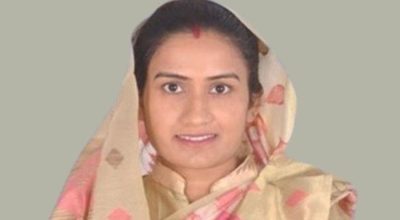
-Narayan Prasad Ghimire/RSS
KATHMANDU: The International Day of Universal Access to Information is being marked across the globe today, September 28. Nepal is also celebrating the day with a variety of programmes.
Information is key to good governance which empowers citizens and props up democratic values. Citizen’s easy access to information and effective information sharing, including proactively by the public offices are essential tenants of the implementation of right to information (RTI). Undoubtedly, true enforcement of citizen’s RTI is linked to accountability and transparency, which paves way for the realization of other rights.
The RTI is a fundamental right in Nepal, as envisaged by the Constitution. Similarly, the Right to Information Act, 2064 has devised provisions for citizens to seek and receive the information of his/her and public concern from the public agencies. There is also the National Information Commission (NIC), a body dedicated to look after the RTI Act and help augment RTI regime. In addition to this, the role of CSOs is equally significant to bring RTI movement to this stage in Nepal.
Since the inception of RTI Act, several activities have been conducted to widen the RTI regime- training to the youths, orientation to public officials, conduct of RTI convention and conferences, exchanges of national and international knowledge on RTI, and creation of national networks of RTI campaigners, among others.
The words ‘seek’ and ‘receive’ make it clear that effective enforcement of RTI needs two sides- the demand side and supply side. As all citizens can be the information seekers, each public office represents the supply side or that provides the information. Seeking and providing information has direct bearing on performance of public bodies, where people’s interest and concern cannot be ignored. Demanding information is not simply a task of seeking information but also the endeavour to question the authority which wields power. Although the ‘public bodies, as per RTI Act, encompasses other institutions including political parties, it is largely the bureaucracy in Nepal. How about the role of bureaucracy to enforce the RTI?
Cagey bureaucracy
One of the most important actors to implement RTI Act is evidently the public office or bureaucracy. But how is the nature and behaviour of Nepali bureaucracy to deliver public service? Bureaucracy, as a permanent government, is responsible sector to look after numerous issues relating to citizens. So, smooth management of bureaucracy is demanded for good governance. Although the bureaucracy was initially run by the verbal order, the rule, then gradually regarded as public administration, then the public management, and now expected to play a role of facilitator, the promptness and convenience are still elusive. It is what many argue in their opinions.
In this regard, an RTI expert, Dharmendra Jha, observed, “Lack of commitment among the political leadership which wields power on the one hand and non-cooperation of bureaucracy which has been nurtured in a culture of secrecy, on the other are major challenges before the effective implementation of RTI in Nepal.”
The expert’s view substantiates the public blame that we have cagey bureaucracy which hesitates to share information of public concern to the people, thinking they it would put them at risk. It clearly indicates the urgent need of making public officers aware of the value of information to the people and society. As long as the transparency, openness and accountability continue becoming casualties of cagey public offices, hearing on citizens’ voice and good governance are distant cry. The repetition of old rhetoric that political parties and government leaders and bodies concerned are committed to good governance does not suffice but warrants serious review of the activities they performed and check whether outcome has resulted into the change and reform.
Digital literacy to consume right information
As we are pondering largely over the access to information on this Day, we should not forget that we are overwhelmed with the information in the wake of digital revolution. The internet penetration has exceeded 100 percent in Nepal too. Many regard that internet is the social networking site-Facebook, Youtube, Insta- they use. Not only the urban areas but also the rural ones are gradually becoming hyper-connected. The flow of information has engulfed every sector and profession that it has been tough to negotiate the digital space. Is the spiraling information available in a wink of eye from across the globe real and true? How is our digital consumption in terms of information available in digital spheres? The floods of fake news: dis/misinformation has swayed the public and determined people’s opinion, argument and debate.
The spread of misinformation/disinformation does not make people clear or informed but adds confusion and chaos, resulting to harassment, hatred, revenge among people and society. Capacity building of digital consumers must therefore be one of the top priorities in the information campaign. Traditional information seeking and supplying does not incorporate this pertinent issue. Concerned efforts from all concerned sectors can explore positive sides of the internet by staying away from the harms it facilitates. It is now fair to say that digital literacy is an urgent need to ensure right information to the citizens.
Stories of Rudane and Yogmaya
Similarly, when it comes to the campaign to know or to question in Nepal, one of the unforgettable references is of Rupchandra Bista ‘Rudane’ and his ‘Thaha’ (Know, Be Informed) movement. In this connection, in a feature story to the National News Agency (RSS), its reporter from Itahari, Birat Anupam, writes: “Story of Thaha and Rudane, Nepal’s legendary activist, elected leader and philosophical and academic figure Rupchandra Bista is considered as the biggest advocate for information accessibility in Nepal. Bista was popularly known as Rudane. Rudane was the name he coined for himself. Rudane famously used the term ‘Thaha’….He emphasized people to adopt Thaha to excel their lives and livelihoods.”
Going further into the awareness and informed citizenry built by the social campaign, even the story of Yogmaya can be remembered. The awareness created among the people with enlightened information by then Brahmin widow in eastern part of Nepal was a huge protest, but for the social reform. Even the male ones were enticed by her movement against social suppression and feudalism during the time of autocratic Rana regime in Nepal. She strongly advocated against social evils including caste-based discrimination.
After a writer Nilam Karki Neeharika wrote ‘Yogmaya’, a book devoted to the life story of Yogmaya, it paved way for many to read Yogmaya’s contribution to Nepal’s information and awareness regime, social reform and woman-led movement.
These two figures can be analyzed further to know how their movements contributed to the awareness with the information they shared and the campaign they led for change- the right to information (RTI) also aspires to build equal, inclusive and sustainable society/system where the good governance prevails. Nepal’s legislation of RTI Act and subsequent practices with the robust background created by Yogmaya and Rudane movements are remarkable developments to create good governance.














